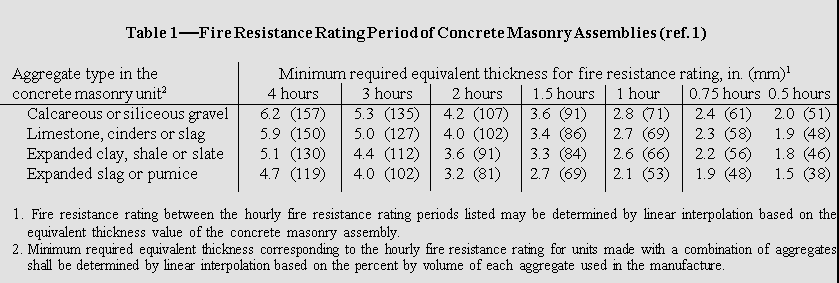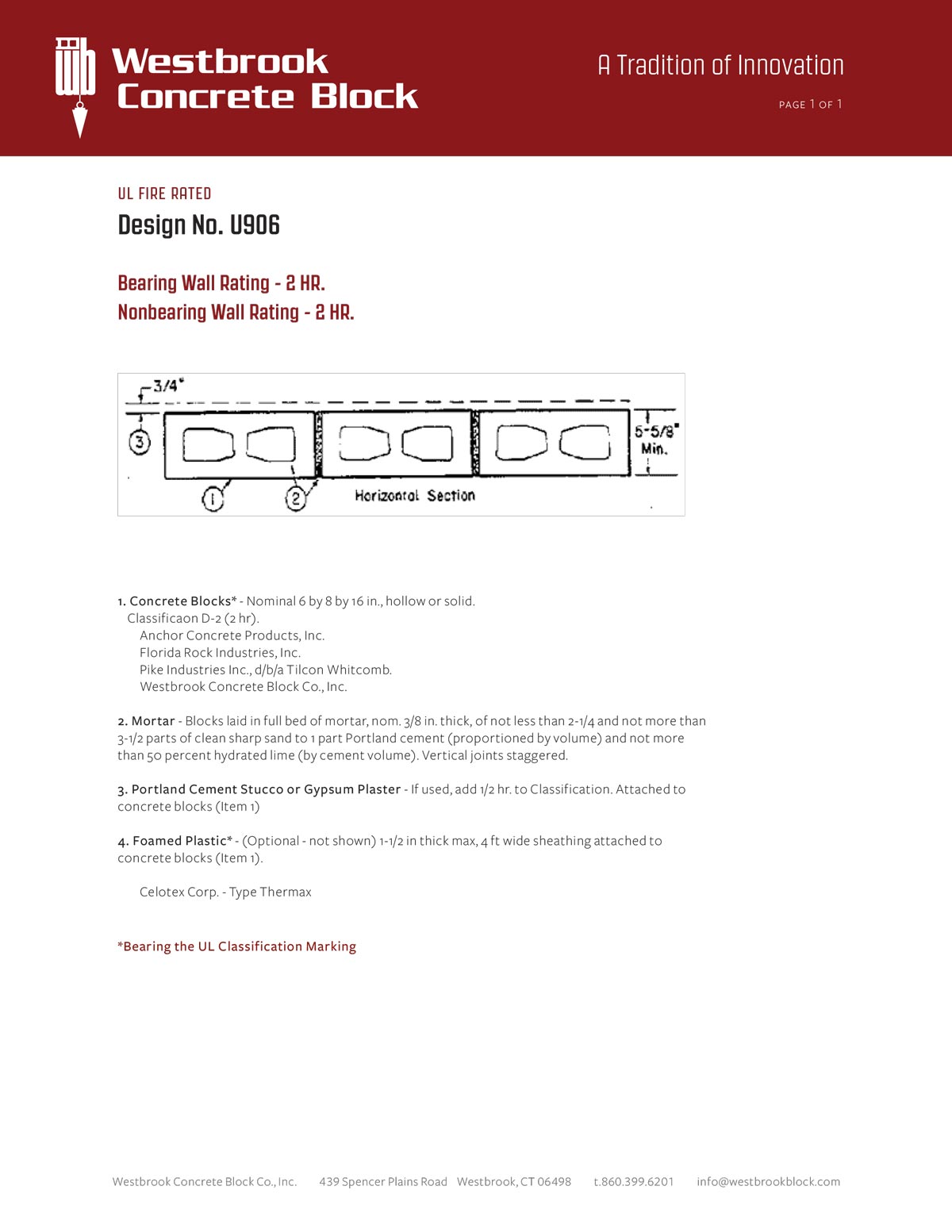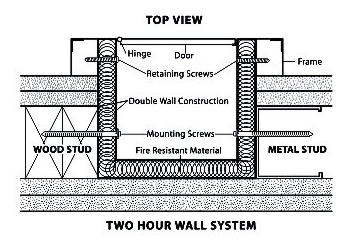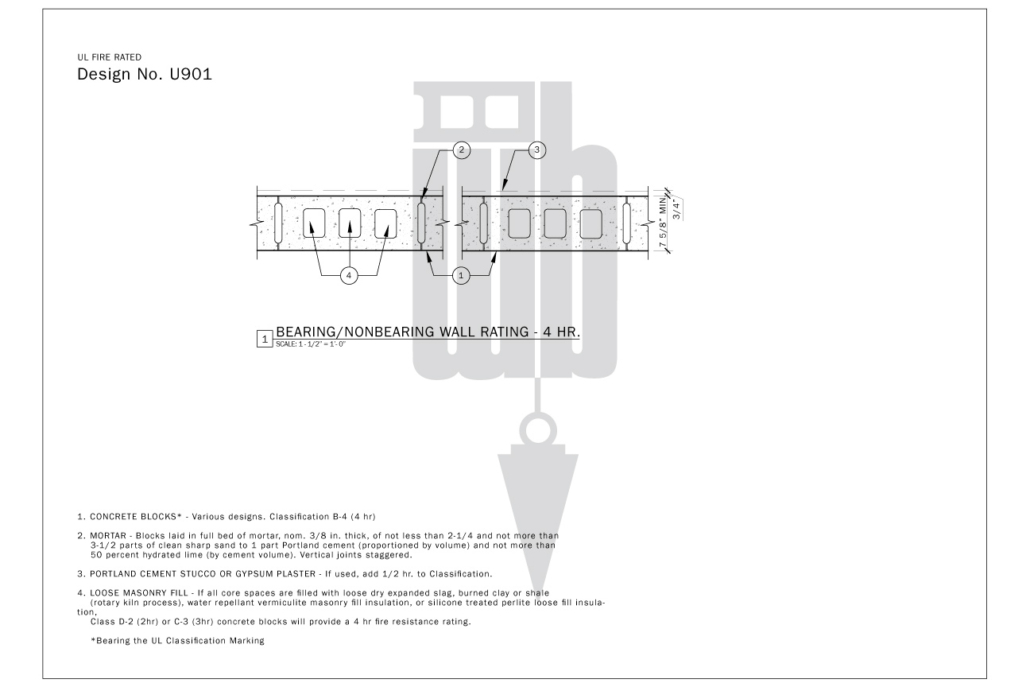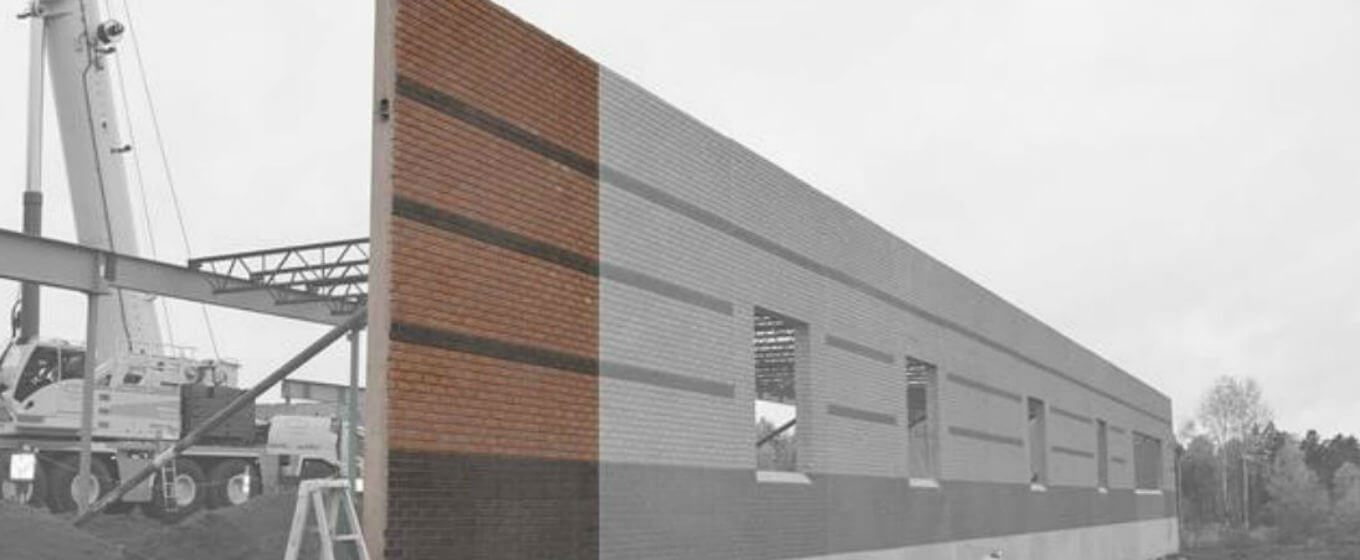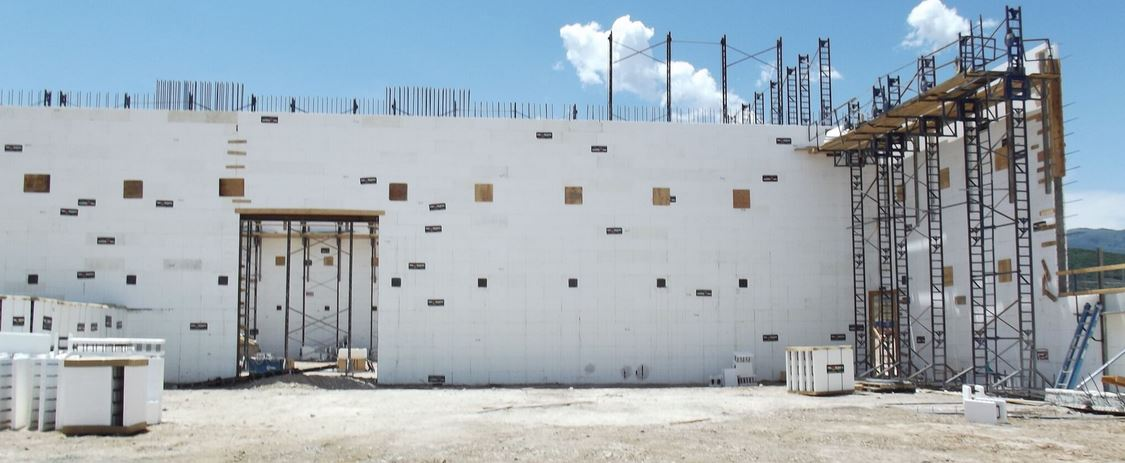Solid Concrete Wall Fire Rating
For example for an 8 in.
Solid concrete wall fire rating. Fire rating fire resistance of concrete masonry units is determined by the equivalent thickness of the block and the type of aggregate. Fire ratings of concrete and masonry structural elements considers two factors. The minimum equivalent thicknesses of cast in place or precast concrete walls for fire resistance ratings of 1 hour to 4 hours are shown in table 722 2 1 1. It is also referred to as a fire rating fire resistance classification or hourly rating.
51 mm thickness can be used in the joints of a 4 hour wall. 203 mm limestone aggregate concrete masonry wall with a maximum control joint width of in. For solid walls with flat vertical surfaces the equivalent thickness is the same as the actual thickness. The values in table 722 2 1 1 apply to plain reinforced or prestressed concrete walls.
The equivalent thickness is the theoretical thickness of the block if all the concrete was molded into a solid unit. As an example a wall with a fire resistance period of 2 hours and 25 minutes may only attain a fire resistance rating of 2 hours. 25 mm thickness measured perpendicular to the face of the wall of ceramic fiber in the joint can be used in walls with fire resistance ratings up to 3 hours while a 2 in. Fire resistance rating or fire rating is defined as the duration of time that an assembly roof floor beam wall or column can endure a standard fire as defined in astm e 119 3.
Unit width block type face shell solid equivalent thickness normal weight concrete siliceous gravel medium weight 105 125lb per cubic ft blended light weight under 105lbs per cubic ft expanded clay shale or slate 4 4 3 core regular solid. A fire resistance rating between the hourly fi re resistance rating periods listed may be determined by linear in terpolation based on the equivalent thickness value of the concrete masonry unit. Aci 206 provides the definition of these two terms. Fire endurance and fire resistance.
The standard is used to hourly fire rating and to indicate wall s its durability during a fire. 13 14 6 15 shall apply. It is calculated by multiplying the actual thickness by the percent of solids. Aci tms 216 1 14 code requirements for determining fire resistance of concrete and masonry construction assemblies lists the minimum equivalent thickness of single layer concrete walls to meet fire resistance ratings ranging from 1 to 4 hours see table on following page.
Fire endurance is a measure of elapsed time during which a material or assembly shows fire resistance under determined conditions of test and performance when applied to structural elements. The requirements of astm c55 astm c73 astm c90 or astm c744 refs. Fire ratings hours. Fire endurance of structures figure 5 shows the effect of fire on the resistance of a simply supported reinforced concrete slab.
A fire resistance rating is based on a fire resistance period and usually given in half hour or hourly increments. These values are for solid walls or slabs. The hose stream test provides a meaningful measure of. A wall tested according to e 119 undergoes both fire exposure and water hose stream testing.

